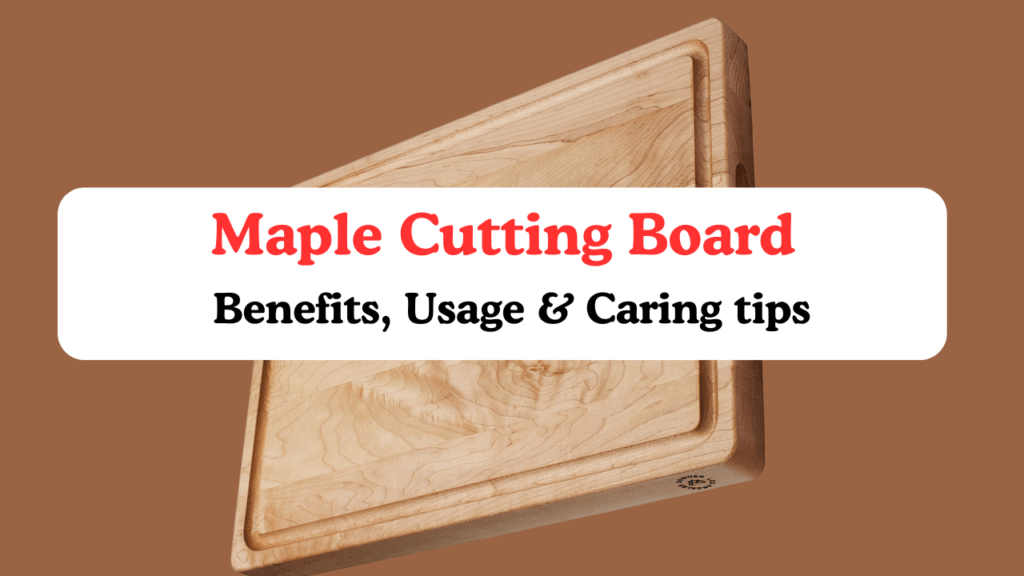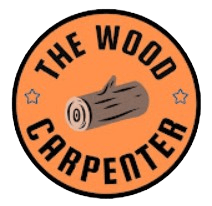
What Is a Maple Cutting Board ?
“Maple cutting board” almost always means hard (rock/sugar) maple—the same species used for butcher blocks, workbench tops, and even bowling alleys. Hard maple’s Janka hardness is ~1,450 lbf, giving it excellent resistance to dents and knife scars without being so hard that it dulls knives quickly.
Maple’s closed, fine grain is another standout: fewer/lower-diameter pores mean fewer places for moisture and grime to lodge compared with open-pored woods. That’s a big reason maple has become the most popular cutting-surface wood in North America.
Two common build types:
End-grain (checkerboard look): fibers are vertical; blades “slip between” fibers, staying sharper longer. More self-healing, but heavier and needs consistent care.
Edge-grain (parallel strips): lighter, more affordable, and very stable for daily work.
Is Maple Good for Cutting Boards ?
Absolutely—here’s why it wins in home and pro kitchens:
1. Balanced hardness = durability + knife safety
At ~1,450 lbf, hard maple holds up to daily chopping while remaining knife-friendly. Softer maples are notably weaker; hard maple is the go-to for butcher blocks and heavy prep.
2. Tight, closed grain aids hygiene
Maple’s fine pores limit fluid ingress at the surface; wood also draws microbes into capillaries where they lose access to oxygen. That’s why quality wooden boards—especially hard maple—perform so well.
3. NSF acceptance & real-world credibility
Maple boards (e.g., from certified makers) are NSF-approved for commercial kitchens, reflecting sanitation confidence when boards are maintained correctly.
4. Aesthetics & availability
Light, neutral color fits any type of kitchen; figured variants (e.g., bird’s-eye) are prized. Hard maple is widely available across North America, keeping cost reasonable versus many exotics.
Maple or Walnut: Which Is Better for a Cutting Board ?
| Factor | Maple (Hard/Rock) | Walnut (Black) | What it means for you |
| Hardness (Janka) | ~1,450 lbf | ~1,010 lbf | Maple is tougher and resists dents/scars longer; walnut feels a touch “softer” under the knife. |
| Grain/Porosity | Tight/closed | Moderately open-pored vs maple | Maple’s micro-porosity advantages hygiene and stain resistance; walnut’s darker tone hides marks. |
| Knife friendliness | Excellent | Excellent | Both are kinder to knives than glass/stone and ultra-hard bamboo. |
| Appearance | Light/creamy | Rich/dark chocolate | Walnut is the showstopper for plating/serving; maple is bright and “pro-kitchen” clean. |
| Price/Availability | Often lower | Often higher | Maple is widely available; walnut can cost more depending on region. |
| Best pick if… | You want maximum durability and value | You want a premium look and don’t mind softer wood | Both are top-tier; choose based on priorities. |
Verdict: If you prioritize longevity, hardness, and cost, choose maple. If you prize dark aesthetics and a slightly gentler feel, choose walnut—or get one of each and color-code your use.
Are Maple Cutting Boards Safe for Meat?
Yes—when used and cleaned properly. Decades of lab work (notably UC-Davis/Cliver) show that wooden boards often retain fewer recoverable bacteria than plastic because liquids are absorbed into the wood and bacteria become trapped and die off.
Official guidance: The USDA says consumers may use wood or non-porous boards for raw meat/poultry. The key is cleaning and sanitizing after use. A widely recommended sanitizer is 1 tablespoon unscented liquid chlorine bleach per 1 gallon of water (≈200 ppm).
Safe-use routine (post-meat):
- Scrape, then wash it with the hot, soapy water and then rinse.
- Sanitize it with 1 tbsp of bleach per gallon water; let it stand a few minutes.
- Rinse and air-dry upright (don’t towel-trap moisture).
- Oil periodically to keep fibers sealed (food-grade mineral oil; optional beeswax blend).
Pro tip: Keep separate boards for raw proteins and ready-to-eat foods to minimize cross-contamination—color-code or label them.
How to Choose a Maple Cutting Board (Buyer’s Checklist)
Grain orientation: End-grain for heavy chopping & knife kindness; edge-grain for lighter weight and value.
Thickness: 1.5–2.25 in for stability (thicker resists warping).
Size: At least 18×12 in for meal prep; larger if you break down proteins.
Feet vs reversible: Rubber feet add grip/airflow; reversible doubles surface area.
Juice groove: Handy for carving meats; skip if you want a flat board for pastry.
Finish: Food-grade mineral oil or oil-and-wax blend (avoid vegetable oils that can go rancid).
Certification: NSF-certified options signal sanitation-friendly design and finish.
Care & Maintenance (Make It Last a Decade)
Season monthly (or when dry): Flood it with the mineral oil; let it soak, and wipe of the excess.
Daily cleaning: Hot soapy wash → rinse → air-dry upright.
Sanitize after raw proteins: 1 tbsp bleach per gallon water; rinse, dry.
Deodorize/refresh: Coarse salt + lemon scrub; wipe and dry.
Avoid: Dishwasher, soaking, direct heat, or leaving wet on countertops (swelling/warping risk).
Resurface (optional): Fine-grit sanding restores feel; re-oil immediately.
Frequently Asked Questions
1. Is maple good for cutting boards?
Yes. Hard maple’s ~1,450 lbf hardness, tight grain, and knife-friendliness make it a gold-standard choice for both home and commercial kitchens.
2. Is maple or walnut better for a cutting board?
Both are excellent. Maple is harder/more durable and often more affordable; walnut offers premium, dark aesthetics and hides stains. Choose based on your priorities—or keep one of each for different tasks.
3. Are maple cutting boards safe for meat?
Yes—with proper sanitation. Wood can trap and inactivate bacteria inside its fibers, and USDA guidance allows wood or non-porous boards for raw meat, provided you clean and sanitize (bleach: 1 tbsp/gal). Maintain separate boards for raw proteins and ready-to-eat foods.

